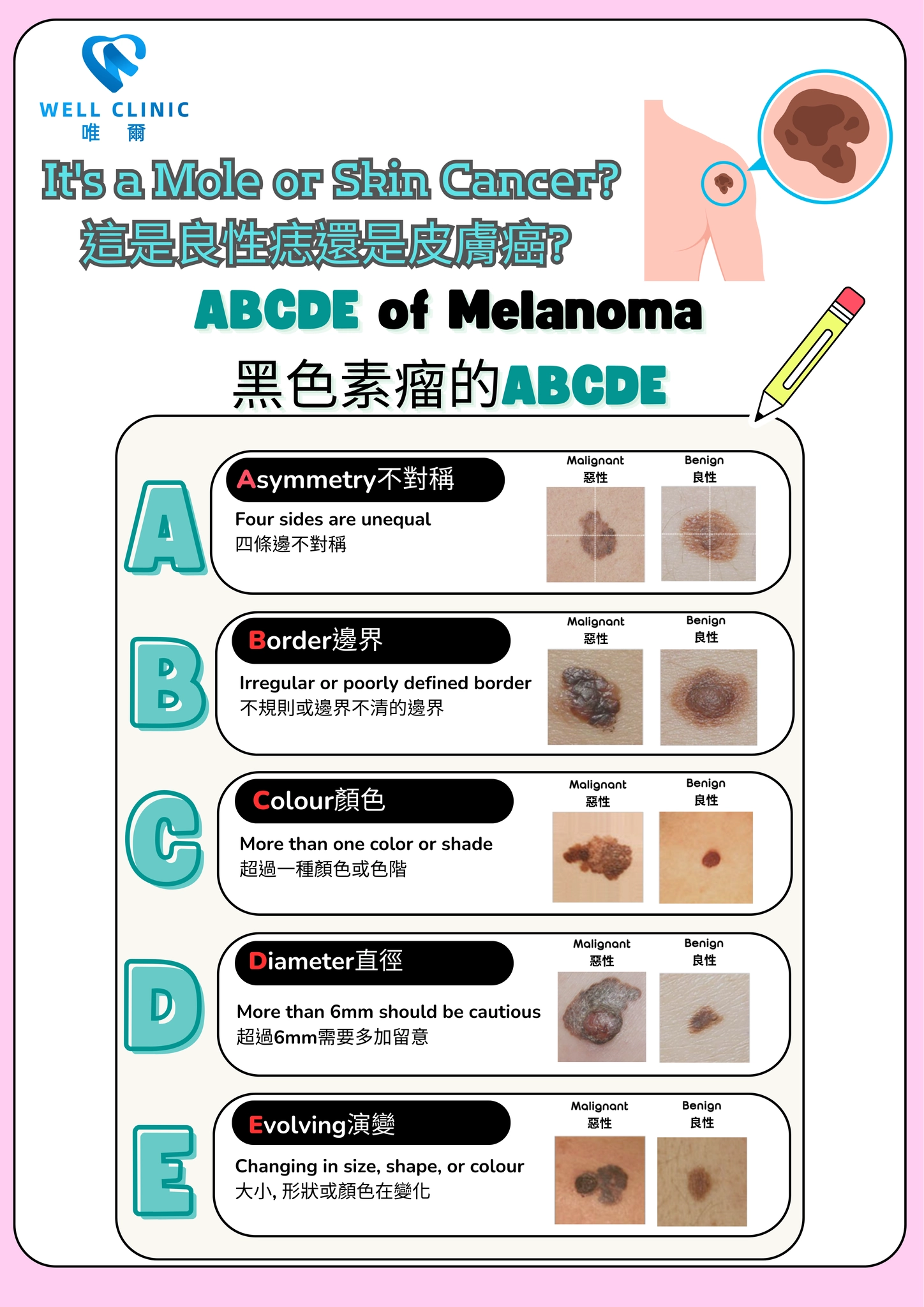
“Sing Tao Headline” reports: Nearly 40% of HK cancer patients have had shingles, chemo patients face 25-fold higher risk, government urged to subsidize vaccines
“Sing Tao Headline” reports: Nearly 40% of HK cancer patients have had shingles, chemo patients face 25-fold higher risk, government urged to subsidize vaccines

“am730” reports: Chronic patients and the elderly should guard against RSV, vaccination strengthens protection ahead of peak season
“am730” reports: Chronic patients and the elderly should guard against RSV, vaccination strengthens protection ahead of peak season

Shingrix (Zoster Vaccine)
The 2nd-generation herpes zoster vaccine is more effective than the 1st-generation in preventing herpes zoster and post-herpetic neuralgia, and reducing the risk of other complications…

It’s a Mole or Skin Cancer?
Skin cancer can be roughly divided into two categories: melanoma and non-melanoma. Non-melanoma can be further divided into squamous cell carcinoma and basal cell carcinoma. There are also other rarer types such as Merkel cell carcinoma.
According to Hong Kong Cancer Statistics, the number of new skin cancer cases in 2021 is 1,200, which is a significant upward trend compared to 990 in 2012. Many people have the experience of noticing a new pigmented nevus has grown on their skin but don’t know whether it is a benign mole or skin cancer, or wonder is it cancerous on the thick black lines of the nails? How to distinguish between benign and malignant skin lesions? One can differentiate according to the ABCDE rules.
A is asymmetry. Draw a cross in the middle of the mole to see if the four sides are symmetrical. Symmetrical one tend to be benign and asymmetrical tend to be malignant.
B is border. Whether the border is a regular or irregular. The regular one tends to be benign, whereas irregular one tends to be malignant
C is colour. The one with a single color tends to be benign, whereas contains more one colour or shade tends to be malignant
D is diameter. The smaller the size, the more benign it is. The larger the size, especially larger than 6mm, it is more likely to be malignant
E is evolving. If over time there is no change, it tends to be benign. If it becomes bigger and bigger, or if it changes in morphology, it tends to be malignant
If you have any doubts, please consult a doctor as soon as possible. Even if it is really skin cancer, it can be completely cured by current treatments if detected early.







